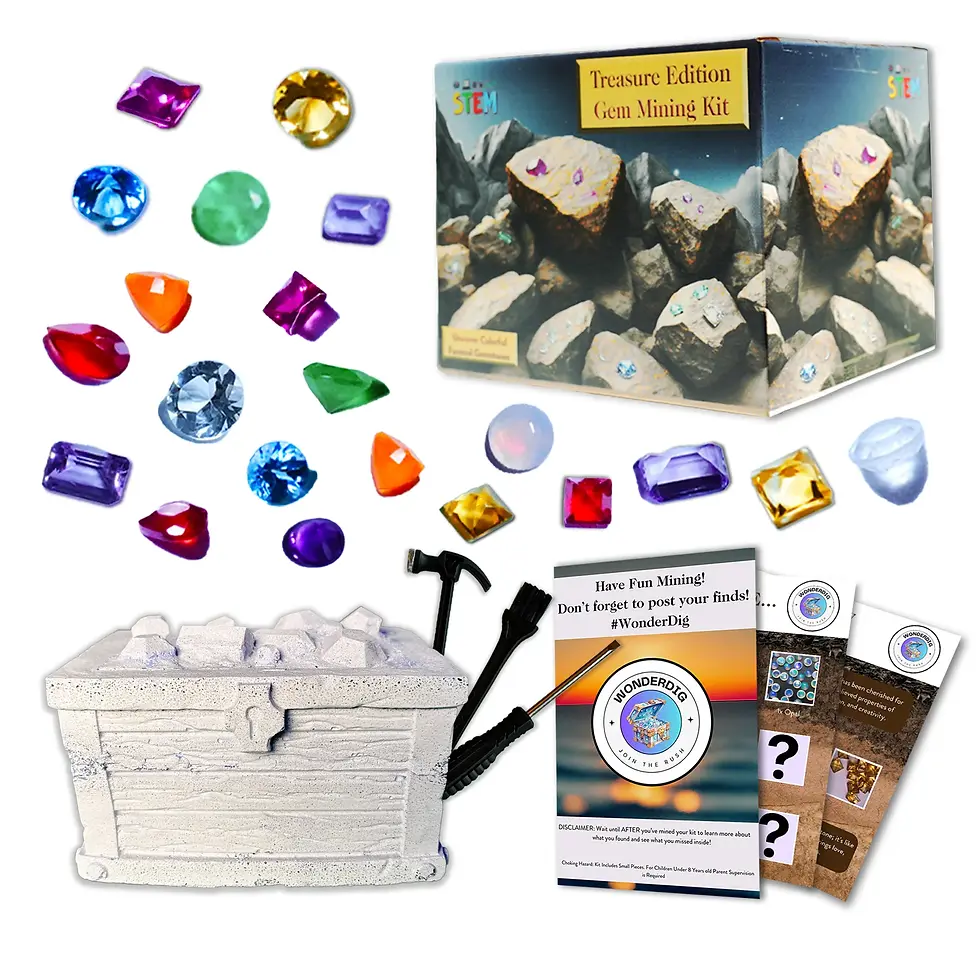Geodes: Unveiling Nature’s Hidden Treasures
Updated: Sep 19
Geodes are one of nature’s most fascinating creations, hiding beautiful crystal formations inside seemingly ordinary rocks. These hollow stones, lined with sparkling crystals, have captivated collectors and rockhounds for generations. In this guide, we’ll explore the world of geodes, from how they form to where you can find them. We’ll also provide tips on identifying, collecting, and caring for these natural treasures.

What Are Geodes?
A geode is a hollow rock that contains crystals or mineral formations on the inside. While the outer shell of a geode may look like an ordinary rock, the interior can reveal stunning crystals of quartz, amethyst, calcite, or other minerals. Geodes are formed over millions of years, typically in volcanic or sedimentary rock formations, when mineral-rich water enters a cavity in the rock and slowly deposits crystals as the water evaporates.
Formation: Geodes form in cavities within volcanic or sedimentary rock, where mineral-rich water enters and slowly deposits crystals. As the water evaporates, the minerals crystallize, creating the stunning formations found inside geodes. The type of crystal that forms depends on the minerals present in the water.
Types of Geodes:
Geodes can vary in size, shape, and mineral content. Some of the most popular types include quartz geodes, amethyst geodes, and calcite geodes. Amethyst geodes are particularly prized for their deep purple crystals, while quartz geodes are valued for their clear, sparkling crystals.

Where to Find Geodes
Geodes can be found in various locations around the world, particularly in regions with volcanic or sedimentary rock formations. Some of the most popular geode hunting locations include:
Keokuk Geodes (Iowa):
Description: The Keokuk geodes found in southeastern Iowa are famous for their quartz crystal formations, often accompanied by calcite, pyrite, or other minerals. These geodes are highly sought after by collectors and rockhounds.
Tips: Bring a rock hammer and chisel for extracting geodes from the surrounding rock. Be sure to obtain any necessary permits before collecting.
Humboldt County (Nevada):
Description: This region of Nevada is known for its geode beds, where collectors can find geodes filled with quartz, amethyst, and other minerals. The area is popular with rockhounds, and many public collecting sites are available.
Tips: Wear sturdy boots and bring plenty of water for hiking through the desert. Be mindful of the heat and take breaks as needed.
Hoosier National Forest (Indiana):
Description: Located in southern Indiana, Hoosier National Forest is known for its geodes, which can be found in the streams and creeks that run through the forest. These geodes often contain quartz crystals and other minerals.
Tips: Bring a shovel and bucket for digging through the stream beds. Be sure to follow the forest’s regulations and collect only in designated areas.

Uncover Hidden Crystals at Home!
Love geodes? Take your passion to the next level with our Limited Edition Geode Break-Open Kits! These exclusive sets contain real geodes, ready to be cracked open, revealing stunning crystal formations inside. But hurry—only 2 unique sets are available:Each set is one-of-a-kind, and once they’re gone, they’re gone for good! Choose your set and start your DIY geode adventure today.
How to Identify and Collect Geodes
Identifying geodes in the field can be challenging, as they often resemble ordinary rocks on the outside. However, there are a few key features that can help you recognize potential geodes:
Weight: Geodes tend to be lighter than solid rocks due to their hollow interior. If you pick up a rock that feels lighter than expected, it could be a geode.
Surface Texture: Geodes often have a rough, bumpy surface that indicates the presence of crystals inside. The outer shell of a geode is typically made of limestone, basalt, or another type of sedimentary or volcanic rock.
Location: Geodes are most commonly found in regions with volcanic or sedimentary rock formations. Look for areas where these types of rocks are exposed, such as riverbeds, cliffs, or quarries.
Collecting geodes typically involves using a rock hammer and chisel to carefully break open the rock and reveal the crystals inside. If you want a cleaner and more precise display, you can also have your geodes cut open with a saw by a professional.

Caring for and Displaying Geodes
Once you’ve collected your geodes, it’s important to care for them properly to preserve their beauty. Here are some tips for cleaning, storing, and displaying your geodes:
Cleaning: Gently clean your geodes with water and a soft brush to remove dirt and debris. Avoid using harsh chemicals or abrasive materials, as these can damage the crystals.
Storage: Store your geodes in a cool, dry place away from direct sunlight to prevent fading or damage. If you have valuable geodes, consider using a display case to protect them from dust and damage.
Displaying: Geodes make beautiful display pieces, whether in their natural state or cut open to reveal the crystals inside. Consider placing your geodes on a stand or in a display case to showcase their beauty.
Geodes are nature’s hidden treasures, offering stunning crystal formations inside seemingly ordinary rocks. Whether you’re an experienced collector or a beginner rockhound, geode hunting can be a rewarding and exciting adventure. By following the tips and guidelines provided in this guide, you can make the most of your geode hunting experience and uncover the beauty of these natural wonders.
















Commentaires